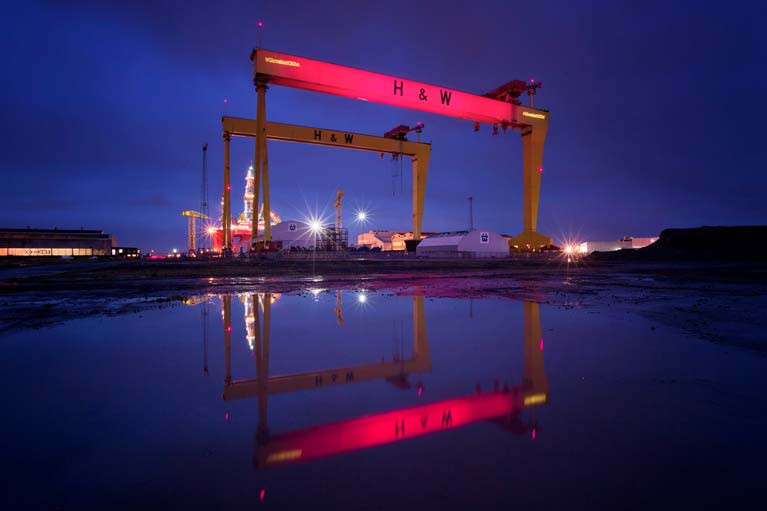In Belfast’s world-famous Harland and Wolff shipyard where the Titanic was built, the horn which hasn’t been sounded for more than twenty years, reverberated loud and clear across the city on Thursday night at 8 pm in appreciation of NHS workers. The horn used to signal the end of a shift in a huge yard which had at its peak 30,000 workers.
Harland & Wolff managing director John Petticrew said: “We figured that it would be appropriate because they are unique times we are in, we thought we would sound a unique alarm. It is quite simple. It is to support all the essential workers who are working, like nurses and doctors and bus drivers, to show our support from Harland & Wolff, just the same as everybody else.”
In what has now become a regular occurrence across the UK on Thursdays, people come out to clap in appreciation of the thousands of NHS and Social Care staff as well as all front-line workers battling COVID-19. Over a period of three weeks, the applause has been extended to many more sectors such as Firefighters, Refuse Collectors and the Police.
The honour of sounding the horn fell to Harland and Wolff’s Health and Safety Manager Paul Beattie. He said, “We proudly applaud the work of all those involved in keeping us safe, fed and cared for and for those keeping the lights on, the streets clean and essential transport moving during these challenging days.”
In the accompanying applause, workers were seen on the top of one of the cranes in the yard.
Harland & Wolff is famous for having built most of the ships for the White Star Line. Other well-known vessels built by Harland & Wolff include the Olympic class RMS Titanic, RMS Olympic and the RMS Britannic. They also built ships for the Royal Navy, Shaw Savill, and Union Castle.


























































